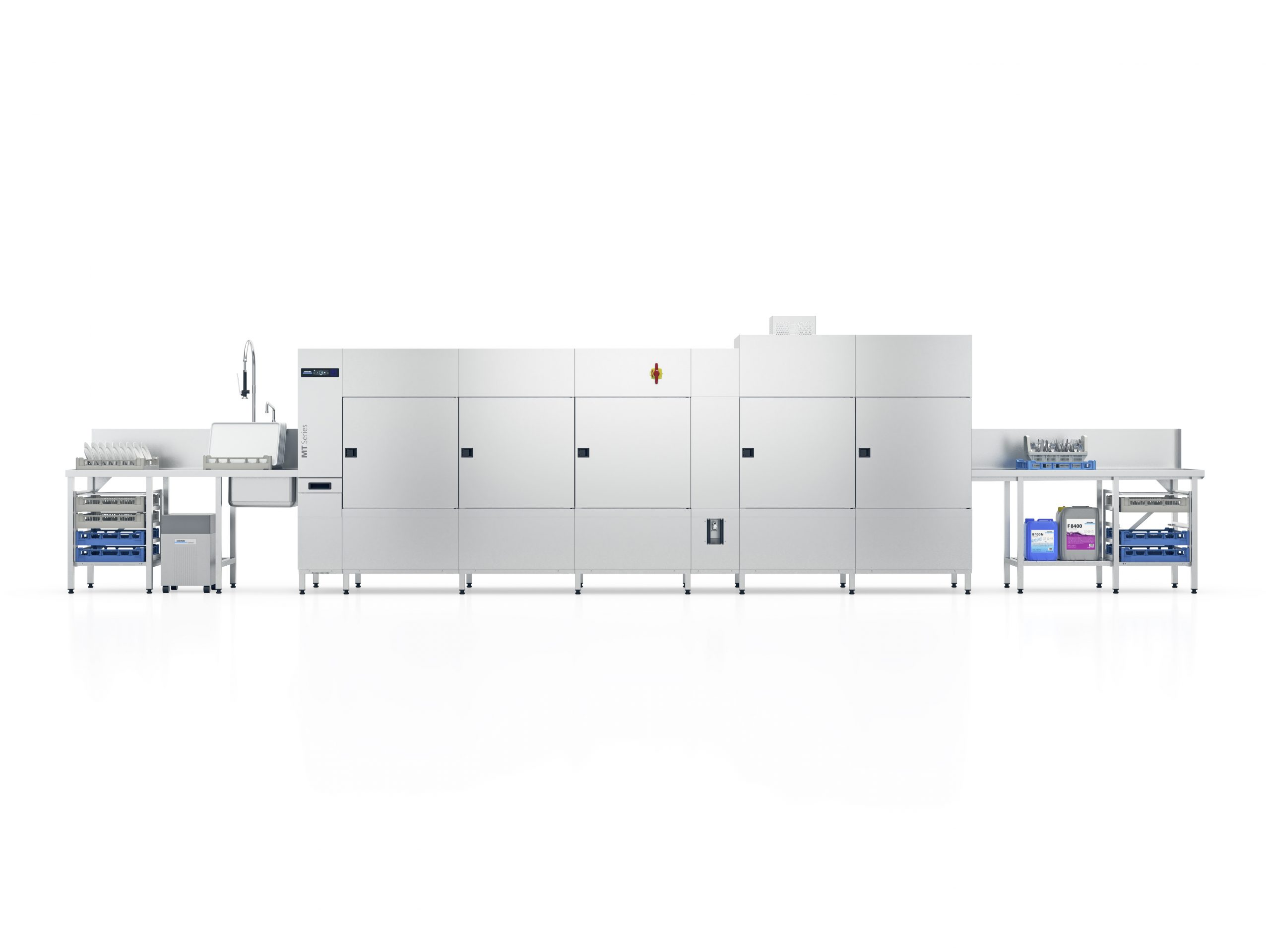MT warewash systems set new benchmarks in performance, adaptability and sustainability
Winterhalter has launched new versions of its MT (Multi Tank) high volume conveyor dishwasher systems. The company says these MTs set new benchmarks in terms of performance, sustainability and adaptability.
Stephen Kinkead, managing director of Winterhalter UK, believes the new MTs are a ‘gamechanger’ that will help designers and operators meet the demands placed on commercial kitchens today. “Functional and energy efficient technology, clever spatial planning, economical operating processes, ease of use and maximum hygiene safety – the MTs deliver in all these key areas,” he says.
There are two models of MT conveyor systems. They are the MTF flight machines, where dirties are loaded directly onto the conveyor, and the MTR rack machines, which use racks to carry the ware.
The MT’s high performance washing system produces first class results while the superior, multi-filtration process minimises running costs, by lowering water use and thus reducing the energy needed to heat it. MT systems have a huge washing capacity – the largest MTF can handle 8,000 plates per hour, while the equivalent MTR has a capacity of 355 racks per hour. As well as cleaning efficiently, the ‘air knife’ and standard drying zones deliver optimised drying results, so that ware can be handled efficiently and quickly after the wash.
The new MT is based around a versatile modular system that allows machines to be configured to very precise specifications – so that it can be constructed to exactly match the application, and designed to match the shape and size of the room it is intended for. The basic structure of the machine consists of the pre-wash, main wash and rinse zones, plus an inlet zone, positioned upstream, and loading and unloading zones. Additional zones, such as extra wash zones, allow the machine to be tailored exactly to individual requirements. If new wash items are added that are difficult to dry, due to their shape or material, the MT can be retrofitted with additional drying units. In addition, Winterhalter offers neutral zones that mean the MT can accept extra-large wash items, such as crates or containers. The neutral zones do this by extending the draining distance between zones. They also enhance the machine’s performance.
The adaptability doesn’t stop there – the MT can be modified if business requirements change. For example, extra wash zones can be retrofitted to increase capacity.
Sustainability is at the heart of the new MT, with a variety of features and options to minimise both environmental impact and running costs. Typical are the heat pumps and exchangers that not only recycle the energy from waste water and water vapour, but also minimise the heat and steam emitted by the machine, enhancing the work environment and reducing the workload on the ventilation system.

